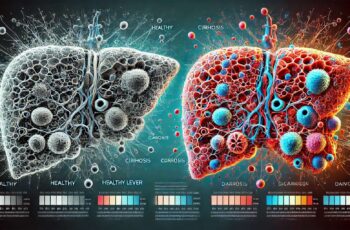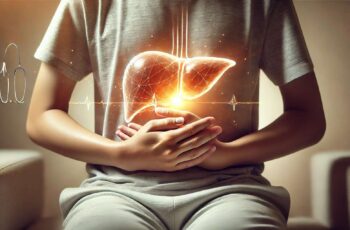Ad Blocker Detected
Our website is made possible by displaying online advertisements to our visitors. Please consider supporting us by disabling your ad blocker.
Fatty liver disease—sounds simple, right? Just fat in the liver. But the reality? It’s far more complex and, unfortunately, increasingly common. Understanding what it is, how it develops, and what you can do about it isn’t just important—it could be life-changing. Whether it’s linked to alcohol, diet, or genetics, fatty liver disease can have serious consequences if ignored. Let’s break it down in a way that actually makes sense.
The Liver: Your Body’s Unsung Hero (Until It’s Not)
Your liver is a powerhouse. It processes nutrients, filters toxins, and keeps your body running smoothly. But when too much fat accumulates, things start going south. Fatty liver disease (a.k.a. hepatic steatosis) happens when excess fat builds up in liver cells, interfering with normal function. While a little fat is no big deal, too much can trigger inflammation, scarring, and long-term damage.
This disease is sneaky. Many people don’t even realize they have it until things get serious. And with cases skyrocketing—especially nonalcoholic fatty liver disease (NAFLD)—awareness and prevention have never been more important.
Types of Fatty Liver Disease: More Than Just “Too Much Fat”
Not all fatty liver disease is the same. It typically falls into these main categories:
- Alcoholic Fatty Liver Disease (AFLD): Heavy drinking overwhelms the liver, causing fat buildup, and inflammation, and potentially leading to cirrhosis.
- Nonalcoholic Fatty Liver Disease (NAFLD): Occurs in people who consume little or no alcohol. It’s closely linked to obesity, diabetes, and metabolic issues.
- Nonalcoholic Steatohepatitis (NASH): A more severe form of NAFLD, where inflammation and liver cell damage increase the risk of fibrosis (scarring) and cirrhosis.
- Alcoholic Steatohepatitis (ASH): Similar to NASH but caused by excessive alcohol consumption, leading to liver inflammation and potential long-term damage.
- Acute Fatty Liver of Pregnancy (AFLP): A rare but dangerous condition that occurs in late pregnancy, requiring immediate medical attention.
What Causes Fatty Liver Disease? (It’s Not Just About Alcohol)
Fatty liver can develop for a variety of reasons, depending on the type. Some key culprits include:
Alcohol-Related Causes
- Excessive alcohol consumption: Your liver prioritizes breaking down alcohol, but in the process, fat accumulates.
- Genetic susceptibility: Some people’s livers are more sensitive to alcohol’s effects.
Non-Alcohol-Related Causes
- Obesity and belly fat: Fat stored around the abdomen increases liver fat storage.
- Type 2 diabetes & insulin resistance: High blood sugar levels fuel fat buildup in the liver.
- High cholesterol and triglycerides: Unhealthy lipid levels contribute to fatty deposits.
- Metabolic syndrome: A dangerous mix of high blood pressure, high blood sugar, excess fat, and abnormal cholesterol.
- Certain medications: Some drugs, like corticosteroids and chemotherapy agents, can increase fat storage in the liver.
- Underlying health conditions: Polycystic ovary syndrome (PCOS), sleep apnea, and hypothyroidism are all linked to NAFLD.
Symptoms: The Silent Progression
Most people with fatty liver disease feel fine—until they don’t. That’s what makes it so dangerous. When symptoms do appear, they might include:
- Fatigue & sluggishness
- Mild abdominal discomfort (upper right side)
- Unexplained weight loss
- Jaundice (yellowing of skin/eyes)
- Swollen legs, ankles, or abdomen (fluid buildup)
- Easy bruising or prolonged bleeding
- Persistent itching
- Brain fog, confusion, or memory issues (in severe cases)
Stages of Fatty Liver Disease: Where Are You On the Spectrum?
- Simple Fatty Liver (Steatosis): Fat builds up, but there’s little inflammation or damage.
- Steatohepatitis: Fat accumulation + inflammation = higher risk of progression.
- Fibrosis: The liver tries to heal, forming scar tissue, but can still function.
- Cirrhosis: Irreversible scarring replaces healthy tissue, leading to liver failure and increased cancer risk.
Cirrhosis is a point of no return—so catching the disease early is key.
How Is It Diagnosed?
Doctors use a mix of methods to confirm fatty liver disease:
- Medical history & physical exam: Alcohol use, medications, and family history are considered.
- Blood tests: Elevated liver enzymes (ALT, AST) indicate potential liver issues.
- Imaging scans: Ultrasound, CT scan, or MRI can reveal fat deposits.
- FibroScan: Measures liver stiffness to detect fibrosis (scarring).
- Liver biopsy: A small tissue sample is analyzed to assess inflammation and damage severity.
Treatment & Management: Can You Reverse Fatty Liver Disease?
Good news: Early-stage fatty liver disease is reversible—but only if you take action.
- Weight loss: Dropping just 5-10% of body weight can dramatically improve liver health.
- Healthy eating: Prioritize whole foods—fruits, veggies, lean proteins, and healthy fats. Avoid sugar, processed foods, and excessive carbs.
- Exercise: Move your body! Aim for 30 minutes of moderate activity most days.
- Cut out alcohol: If you have AFLD, alcohol abstinence is non-negotiable.
- Manage underlying conditions: Control diabetes, cholesterol, and blood pressure.
- Medication (in some cases): No FDA-approved drugs exist, but some medications (like vitamin E) may help—talk to your doctor first.
Prevention: The Best Medicine
Preventing fatty liver disease isn’t complicated—it’s about maintaining a healthy lifestyle:
- Keep a healthy weight
- Eat real, nutrient-dense food
- Exercise regularly
- Limit (or avoid) alcohol
- Manage diabetes & cholesterol levels
It’s not about perfection—it’s about consistency. Small daily choices add up over time.
Final Thoughts: Your Liver, Your Responsibility
Your liver works tirelessly to keep you alive, but it can only take so much abuse. The sooner you address fatty liver disease, the better your outcome will be. Don’t wait until symptoms become severe—take action now.
🛑 Share this article with friends & family—because awareness could save a life.
📢 Disclaimer: This article is for informational purposes only. Always consult a healthcare professional for medical advice and treatment.



